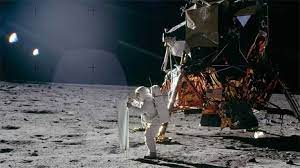Monitoring Desk
WASHINGTON: This finding suggests the presence of water on the Moon’s surface, which is essential for supporting long-term human presence and further space exploration missions.
Researchers from the US Naval Research Laboratory (NRL) have detected solar-wind hydrogen in lunar soil samples, a discovery that could revolutionise future lunar exploration and the establishment of bases on the Moon.
This finding suggests the presence of water on the Moon’s surface, which is essential for supporting long-term human presence and further space exploration missions.
Dr. Katherine D. Burgess, a geologist with NRL’s Materials Science and Technology Division, emphasised the significance of this discovery.
“Hydrogen has the potential to be a resource that can be used directly on the lunar surface when there are more regular or permanent installations there,” she stated.
The ability to locate and collect such resources before arriving on the Moon is considered incredibly valuable for the advancement of space exploration.
The groundbreaking research was conducted using Apollo lunar soil samples provided by a NASA-funded research mission.
The NRL team, spearheaded by experts in the Materials Science and Technology Division, is dedicated to understanding how lunar and asteroidal surfaces interact with the harsh conditions of space, known as space weathering.
Their previous work had already confirmed the presence of solar wind helium within lunar soil grains.
For the first time, scientists have demonstrated the detection of hydrogen-bearing species within vesicles in lunar samples.
Dr. Burgess highlighted that while other researchers have found water in planetary samples and NRL’s team previously detected helium using advanced techniques like scanning transmission electron microscopy and electron energy loss spectroscopy, this is the inaugural report of in-situ hydrogen in lunar samples.
The implications of this discovery are vast, potentially aiding in the design of future missions that could utilize in-situ resources to support human and robotic presence on the Moon.
The research findings were published in the esteemed “Communications Earth & Environment” journal, marking a significant milestone in space science and exploration.







